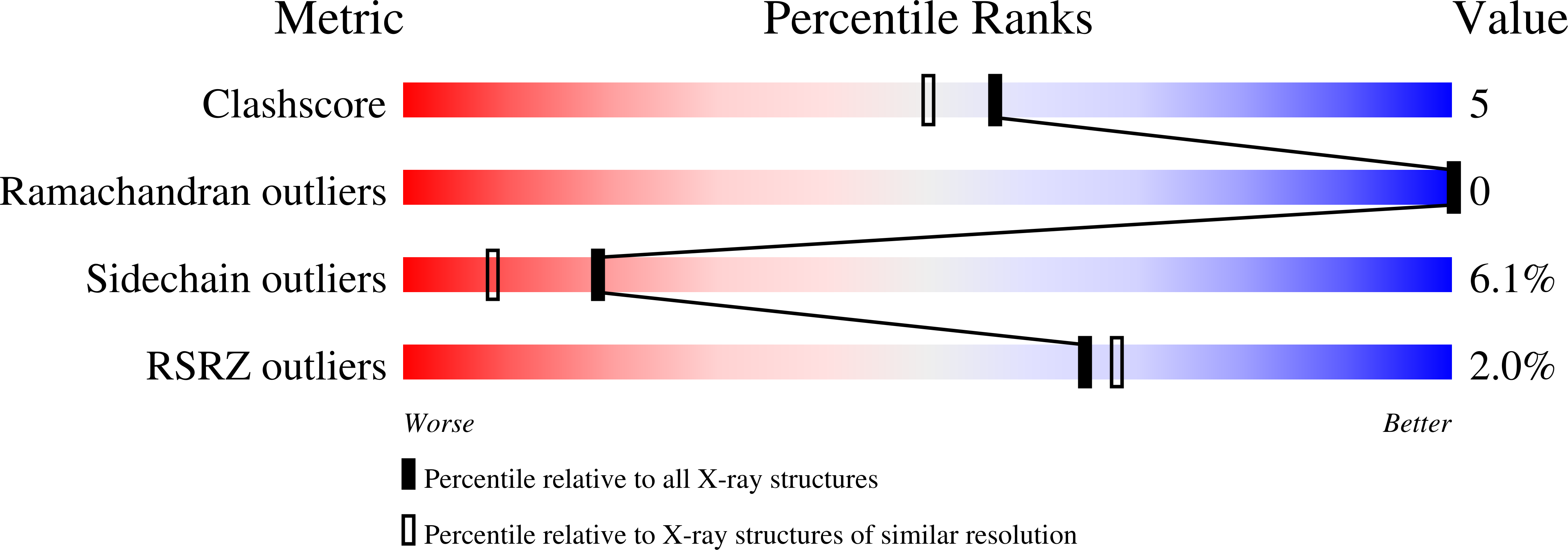Crystallographic study of azurin from Pseudomonas putida.
Chen, Z.W., Barber, M.J., McIntire, W.S., Mathews, F.S.(1998) Acta Crystallogr D Biol Crystallogr 54: 253-268
- PubMed: 9761890
- DOI: https://doi.org/10.1107/s0907444997011505
- Primary Citation of Related Structures:
1NWO, 1NWP - PubMed Abstract:
Azurin from Pseudomonas putida is a blue copper protein which functions as an electron carrier. Two crystal forms of azurin were grown, one in the presence and the other in the absence of zinc acetate; each belongs to space group P21 and contains two molecules per asymmetric unit. The zinc-free crystals have cell dimensions a = 43.25, b = 50.65, c = 54.60 A, beta = 107.79 degrees, while the crystals grown from zinc-containing solution have cell dimensions a = 40.76, b = 51.22, c = 54.96 A, beta = 103.12 degrees. The latter crystals were found to have four zinc ions incorporated into the crystal lattice. Both crystal structures were solved by the molecular-replacement method using the program MERLOT. The search model was the structure of azurin from Alcaligenes denitrificans. The crystallographic R factor for native azurin is 0.169 (Rfree = 0. 257) from 8 to 1.92 A resolution, while that for zinc azurin is 0. 181 (Rfree = 0.248) from 10 to 1.6 A resolution; for each structure the root-mean-square deviation in bond lengths from ideal values is 0.007 A. In both crystal structures the Cu atom forms three strong bonds in the equatorial plane, two with Ndelta1 from His46 and His117, and one with the thiolate S atom of Cys112. Two longer axial approaches are made by the Sgamma from Met121 and the carbonyl O atom from Gly45. This results in a distorted trigonal bipyramidal co-ordination around the Cu atom. It further confirms the presence of a weak fifth bond to the copper in P. putida azurin, as with other azurin structures described at high resolution. The Ndelta1 atom of His35 is protonated, as it is in the low-pH form of azurin from Pseudomonas aeruginosa but unlike the low-pH form of the azurins from Alcaligenes denitrificans or Alcaligenes xylosoxidans. In each crystal form the two molecules of azurin in the asymmetric unit are related by a local twofold axis and form a dimer stabilized by the interaction of a pair of hydrophobic patches surrounding the partially exposed His117 side chain. In the other known azurin crystal structures, analogous dimer formation is observed, but with different relative orientations of the molecules. The four zinc ions introduced during crystallization of zinc azurin are bound to the protein and participate in five- and sixfold ligand coordination with no affect on the copper binding site. The zinc ligands are Ndelta from His, carboxylate O atoms from Asp and Glu, Ogamma from Ser and water molecules. One of the zinc ions, located on a non-crystallographic twofold axis, links the dimers of the asymmetric unit into continuous chains parallel to the crystallographic (-101) direction and is primarily responsible for the altered unit-cell parameters. Two of the other zinc ions bind to His83, one in each molecule.
Organizational Affiliation:
Department of Biochemistry and Molecular Biophysics, Washington University School of Medicine, St Louis, MO 63110, USA.















